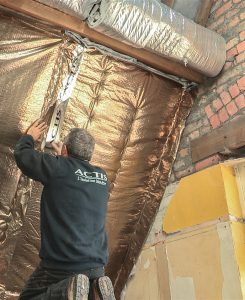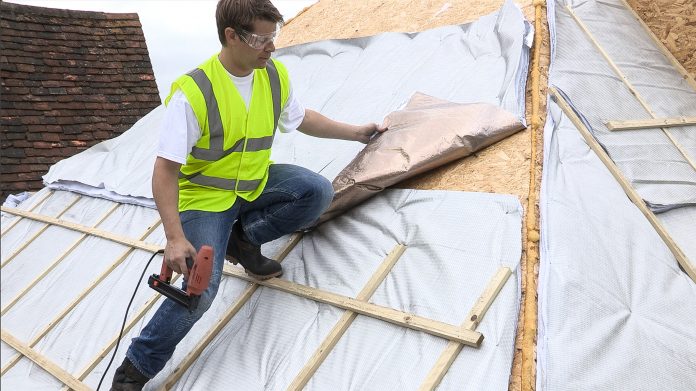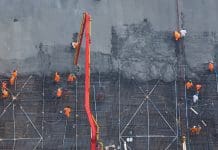Architect Thomas Wiedmer, UK and Ireland technical director at building insulation specialist Actis, explains why it’s a good idea to use a vapour control layer when embarking on a new build or refurb and what to look for when choosing a breather membrane
It’s possible to insulate a building without using a vapour control layer or a breather membrane – there’s no legislation stating one has to be used. But what are the dangers of ignoring this step? After all – why spend money unnecessarily?
While there is nothing in the Building Regulations stating that a vapour control layer or a breather membrane must be used, they are recommended because they massively reduce the risk of interstitial condensation, guarantee air tightness and can protect the building from precipitation and wind driven rain if installed correctly.
Boosting thermal resistance
 Some vapour control layers, such as Actis HControl Hybrid, are dual purpose. While it is CE marked as a vapour control layer and has a high vapour resistance, it also acts as an insulation, which means the thickness of the main insulation can be reduced to achieve the same required U-value. It is used on the warm side of any insulation material, behind the internal finish in roofs, walls and ceilings.
Some vapour control layers, such as Actis HControl Hybrid, are dual purpose. While it is CE marked as a vapour control layer and has a high vapour resistance, it also acts as an insulation, which means the thickness of the main insulation can be reduced to achieve the same required U-value. It is used on the warm side of any insulation material, behind the internal finish in roofs, walls and ceilings.
A breather membrane has a low vapour resistance. Again, like the vapour control layer, some, such as Actis Boost’R Hybrid and Boost R Hybid Roof also act as insulation. These particular products are CE marked as breather membranes but, like HControl Hybrid, are dual purpose.
Reflective and watertight yet vapour permeable it’s used on the cold side of roofs and walls. Because water vapour molecules are smaller than those in water droplets, it lets moisture out but doesn’t let water in. It also helps improve the building’s air tightness. The membrane not only keeps damp out; it boosts thermal resistance, keeping heat in.
Thermal modelling trials carried out by certification body BM TRADA have shown that Actis insulated membranes have a dramatic impact on counteracting thermal bridging and act as excellent thermal blankets.
All three membranes, along with their sister insulation product Hybris, are NHBC-approved and have achieved LABC and LABSS registered details, which means they can be accepted by LABC and LABSS building control surveyors in all local authorities across England, Scotland and Wales when used according to the certification.
For more information on the Actis Hybrid range, visit www.insulation-actis.com and for bite size installation guides visit hybrid.insulation-actis.com/cutting-hcontrol-hybrid/
Actis Insulation
Tel: 01249 462 888
technical@insulation-actis.com
Twitter: @ACTISINSULATION
LinkedIn: Actis Insulation
Facebook: Actis Insulation
Please note: this is a commercial profile.














